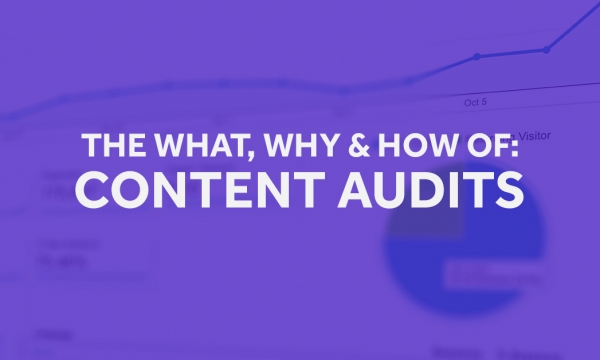As I’m sure happens to many of you, one of those “ten stats from this week that you have to see” emails landed in my inbox recently. Within this email, one stat from a report by BlueVenn caught my eye. Apparently, 64% of marketers don’t believe that it their job to analyse data – but to simply collect it.
Now, that headline figure alone seemed quite remarkable. At a time when there is more and more pressure on each and every piece of marketing activity, how someone could think that it wasn't part of their role to look at the data behind what they are doing and who they are doing it to (or for) seemed perplexing.
Data analysis is rarely seen as the ‘sexy’ side of marketing. Given the choice between sticking our head into a spreadsheet and heading to the next brainstorming session where we’ve been promised there will be a free lunch, the creative marketer has an easy choice. We’re going to hand the Excel file to the resident mathletes and rush to scribble on flipcharts over a Pret a Manger platter.

But here’s the problem. Whilst we all prefer to get stuck in with the big creative ideas that look great, involve new and exciting approaches and earn us a place at the annual awards bash, aren’t we missing a trick by determining whether this stuff, you know, actually works?
Whose job is it anyway?
Now, this isn’t an opportunity to start calling into question those marketers that take a ‘creative first’ approach – there is absolutely value in that, but this idea that data analysis can simply be palmed off elsewhere? That doesn’t seem right.
The stats tell other interesting stories. More than half (57%) of UK and US marketers still don’t use data “to form an accurate 360º view” of their customers, even though 47% felt “very confident” in their abilities to analyse that data.
A separate piece of research by Forrester suggests that companies in the US only analyse 12% of the data they have available, whilst other surveys reveal that the proportion of content marketers that don’t target their content could be as much as 45% - that’s a lot of wasted distribution.

So we have all of this data, we’re mightily good at collecting it and filling the funnel, but we’re not entirely sure who should be actually working out what it all means.
Now, it may be a little glib to suggest that the main reason why we aren’t going through this important process is because there’s another lunch meeting in the next room. There are undoubtedly other pressures – time, skills and resource being chief among them. But surely there has to be an onus on the people who own the marketing process to understand how the messages that they market are engaging that people that they are trying to marketing to – and that’s the marketers?
Giving the data to an Excel guru sounds like a good idea but at some point, somebody is going to have to turn that data into insight and put some creative problem solving in place. Because without that, we end up with more bad marketing.
Targeting and segmentation is getting worse

The internal debate over who needs to study the data is resulting in less effective communications with our audiences. More and more content is being pumped out, there is much more noise, and yet, consumers are being turned off more than ever.
The Direct Marketing Association claims that consumers receive more than 40 brand emails every week in their inbox. That’s a lot of content and, with the level of analytics and tracking that is available to us, logic suggests that those 40+ messages should be more focused, more targeted, more tactical, right?
But here’s the thing; that same DMA report reveals that the number of consumers that feel that those messages are relevant to them has halved since 2011 – to just 16% in 2016. To put that in other terms; your email marketing could be just half as relevant and half as effective as it was five years ago. If any other marketing channel lost that level of effectiveness, you’d be trying to understand why.
What’s worse, is that marketers know this. The same report found that just 9% of marketers said that all of their marketing communications were relevant to their customers, and 42% could say that, at best, 42% of their emails were.
The problem isn’t confined to email however. The CIM reports that 61% of the 2,000 consumers it surveyed received promotional materials for a hobby or interest they don’t have, while 35% get offers for areas they do not live in or visit.
And it’s not as if that reduction is just a case of consumers switching off and becoming desensitised to marketing communications. Data suggests that audiences do engage with, rather than ignore, marketing that actually addresses their need and interests.
But for all the privacy hang-ups, consumers actually want personalised communications

And this is where we hit something of a paradox, because whilst consumers are becoming increasingly suspicious of how brands capture and use data, consumers are increasingly craving more personalised marketing material.
At the end of last year Accenture found that 75% of consumers are more likely to buy from a retailer that recognizes them by name, recommends options based on past purchases, or knows their purchase history. Consumers are willing to shop more with retailers that show that they recognise each individual and can provide appropriate recommendations based on their unique needs.
And that level of knowledge helps to create more emotional connections between brands and consumers and, in an age where experiential elements are increasingly important, that can prove crucial.
How data confident are we?

Because in truth, do we genuinely know that we’re doing the right things? And are we collecting data that we can actually use?
Those questions might sound foreboding, but only this year the Content Marketing Institute suggested that 54% of UK content marketers are either unsure, or don’t have a clear idea on what success looks like for their organisation. Although interestingly from that same sample, 67% claimed that their content was ‘successful’ to one degree or another.
And there are data challenges on the horizon; not least the GDPR, which looks set to change the way in which brands handle consumer data. But this actually puts the issue of data analysis into sharper focus. If marketers are going to make decisions based on data, they need to understand precisely where it had come from and how they are using it.
Find time for data, and let it guide your creative

Marketing isn’t Moneyball, and it would be wrong for anybody to try and remove the creativity and ‘gut feeling’ that is so important at times, in favour of turning everybody into numbers nerds.
But simply producing content for the purpose of collecting data is the proverbial dog chasing the car – it doesn’t know why it wants to catch it, it doesn’t know what it will do when it does catch it, but it just knows that it wants it.
If we’re going to so much trouble to collect this data, if it seems that we can actually make our content more effective and ‘do more with less from our marketing, and if our audiences are actually looking for more personal experience, surely it makes sense to go and find the time to try and join up those dots?
Yes, that analysis will take time, and it will probably require you to produce more content that targets a smaller pool of people but this is about making your marketing work harder. Don’t spend your time just adding to the noise, and don’t spend your time throwing more and more data that nobody knows what to do with into the funnel. Instead, use that time to apply your creative vision to what you know about your audiences and engages them on that personal level. It could be the most effective use of time that you spend this year – and you could even treat yourself to a sandwich platter whilst you do it.



